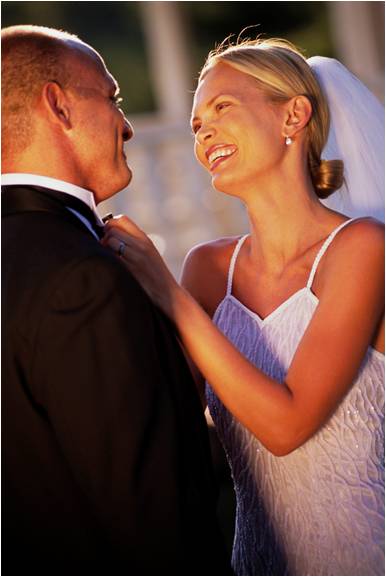Formal Wedding Etiquette
Formal wedding etiquette, as you might guess, is a little more prescribed than more casual affairs. The guidelines cover everything from the engagement to the reception, and can feel a bit overwhelming. The good news is that the trick of getting things right is educating yourself and continuing to follow the practical etiquette rules of courtesy and consideration.
Once you have decided to get married, the first thing you need to do is tell your parents. No matter how you feel they’ll react, you do not want them to hear about this second hand. And you should see them together, in person, if possible. Start your black tie affair off with taking the right steps from the get-go. Once the parents have gotten the news, tradition dictates that the groom’s mother writes or calls the bride’s mother for a get-together. This is the start of bridging two families together.

Next comes the ring. The custom of giving diamonds started in Italy in the 15th century. Modern wedding etiquette, however, doesn’t require an engagement ring. However, there are some important things to remember if you do receive an engagement ring. It’s very rude to express discontentment with the choice, particularly for family heirlooms. Remember, you can pick out a wedding band you like more, and after you’ve been married two years it’s acceptable to discuss a new setting, but until then smile and wear what you’ve been given.
In choosing the location for your ceremony, THINK DRAMATIC! Formal weddings have a grand feel, and the location adds to that. While this isn’t a matter of wedding etiquette, it will provide the affair the "formality" that you are trying to achieve.
For your invitations to a Catholic wedding, formal wedding, or black tie wedding, it is nothing less than essential to note the dress code on the invitation. This means that women attending should wear long evening dress; men should wear tuxedos. And by the way, remember that the appropriate time of day for such formalities is after 6 pm (or after dark). By the way, it is suggested that your invitations be engraved and created on a hardy card stock.

In the bridal party there should be at least four attendants each. The ushers should don white gloves and long white gloves are suitable for the bridesmaids. Most brides choose a full veil and train for a formal event. In terms of flowers – stick with classics like white roses and white orchids, choose orchestral music, and by all means hire a limo for the wedding party. The reception that follows should be at a club, upscale restaurant, or an exclusive hotel.
The ceremony’s progression may be dictated by religious custom, as with a Catholic wedding. The main thing to be aware of for formal wedding etiquette is proper seating. In Christian tradition, the bride’s side is the left looking from the back of the church. In Jewish tradition it’s the right. Elders of the family should be seated near the front along with immediate family. However, parents, grandparents and children do not take their seats until just before the processional, with the mother of the bride seated last. Hint: give the ushers a list of who’s who so they can simply check the name and then seat accordingly.
Following formal wedding etiquette enables you to have that classic and sophisticated wedding you always dreamed about.






New! Comments
Have your say! Leave me a comment in the box below.